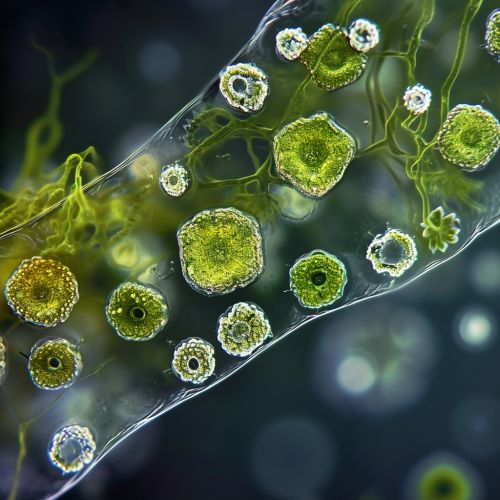Chemolithoautotrophs
Overview
Chemolithoautotrophs are a type of microorganisms that obtain energy by oxidizing inorganic substances, and use this energy to fix carbon dioxide (CO2) into organic compounds. This process is known as chemolithoautotrophy, and is a form of autotrophic nutrition. Chemolithoautotrophs play a crucial role in the biogeochemical cycling of elements, particularly sulfur, iron, and nitrogen.


Physiology
Chemolithoautotrophs are unique in their ability to use inorganic compounds as a source of energy. This is in contrast to photoautotrophs, which derive energy from light, and heterotrophs, which obtain energy from organic compounds. The inorganic substances oxidized by chemolithoautotrophs often include hydrogen sulfide (H2S), elemental sulfur (S), ferrous iron (Fe2+), and ammonia (NH3).
Metabolism
The metabolism of chemolithoautotrophs is characterized by the oxidation of inorganic compounds, a process that releases energy. This energy is then used to fix CO2 into organic compounds in a process known as carbon fixation. The specific pathway of carbon fixation used by chemolithoautotrophs is often the Calvin cycle, although some bacteria use the Reverse Krebs cycle.
Ecological Roles
Chemolithoautotrophs play a vital role in the cycling of elements in the environment. They contribute to the sulfur cycle, the nitrogen cycle, and the iron cycle. In addition, they are often found in extreme environments, such as hydrothermal vents and acid mine drainage, where they are the primary producers.
Examples
Examples of chemolithoautotrophs include the bacteria Thiobacillus, which oxidizes sulfur compounds, and Nitrosomonas, which oxidizes ammonia to nitrite. Another example is the archaeon Ferroplasma, which oxidizes iron.
